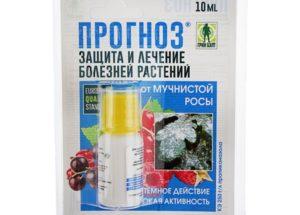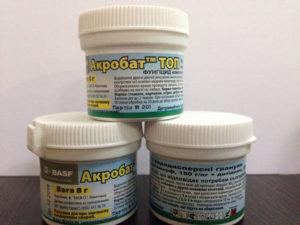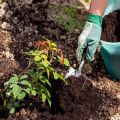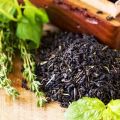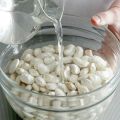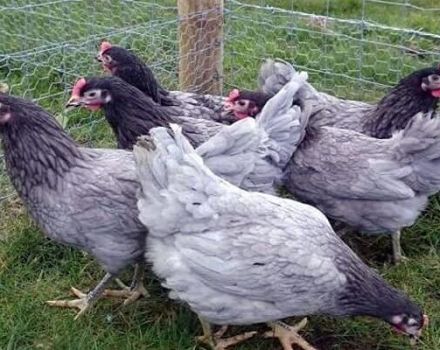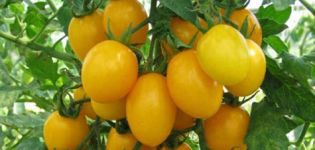Review and description of popular herbicides for treating wheat from weeds
Every grain grower tries to maximize the absence of weeds in the field. Such results can only be achieved with the help of chemicals. Select herbicides, having previously studied the instructions for the preparation, according to the type of wheat, taking into account the climatic conditions of the place.
What weeds interfere with wheat
Wheat herbicide is determined according to the crop species and the specific weeds.
For the correct selection, you should know the characteristics of each variety.
| Variety | Individual characteristics | Characteristic weeds |
| Yarovaya | Highly resistant to adverse factors. Sowing is carried out from March to May. Vegetation no more than 110 days | Common wild oat, field bindweed, tenacious bedstraw |
| Winter | It has an increased level of productivity, is grown in mild climatic conditions, and requires careful maintenance. Crops are carried out at the end of summer and last until October | Field bindweed, white quinoa, common broom, pink thistle, creeping wheatgrass, tenacious bedstraw. |
On a note! The most dangerous are weeds with a similar growing season, a massive root system, with which they suck all nutrients from the soil and take up a lot of space, preventing cultivated plants from developing and functioning normally.

Review of popular drugs
When choosing a high-quality preparation for processing wheat, it is recommended to pay attention to the most popular substances, which are actively used by experienced gardeners and industries on a large scale.
"Aurorex"
It is used to protect grain crops and maize from weeds. As the active substance, carfenosone-ethyl in an amount of 2-50 g / l and 2-ethylhexyl ether. The mechanism of action is aimed at stopping the process of photosynthesis due to the hydrolytic decomposition of organic substances and a decrease in the transport of mineral substances into the weed's body.
The rate of the active solution should be 0.5-0.6 liters per hectare. Spraying is carried out during the growing season, the formation of green mass.
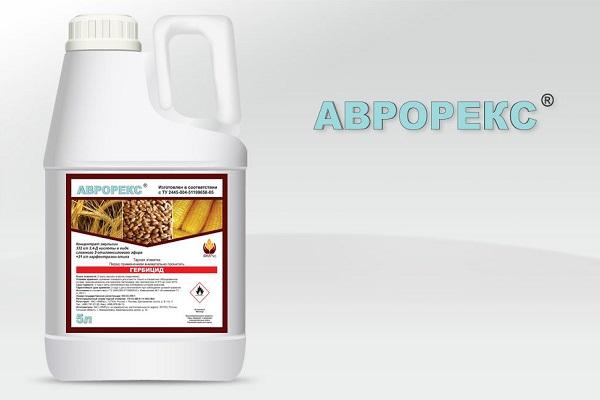
"Lancelot 450"
The herbicide is suitable for treating crops to kill a wide range of weeds. The active substance enters the plant organism through the cuticle of the leaf and, moving along the conductive tissues, is sent to the meristem. The composition of the product is dominated by aminopyralide, which replaces the natural hormones of the weed and disrupts the process of cell division, stopping growth.
The application rate of the preparation for spring and winter wheat is 200-300 liters per hectare. For aerial treatments, reduce the amount to 20-25 liters.
"Bucephalus"
Contact post-emergence herbicide of selective action, intended for protection of cereal crops from weeds. The composition contains carfentrazone-ethyl in the amount of 480 g / l. It clogs the pores and prevents the penetration of moisture into the weed, and as a result of the drying of the green mass, the plant dies.
Enough 200-400 liters of working composition per hectare to achieve this effect. Spray in the tillering phase.
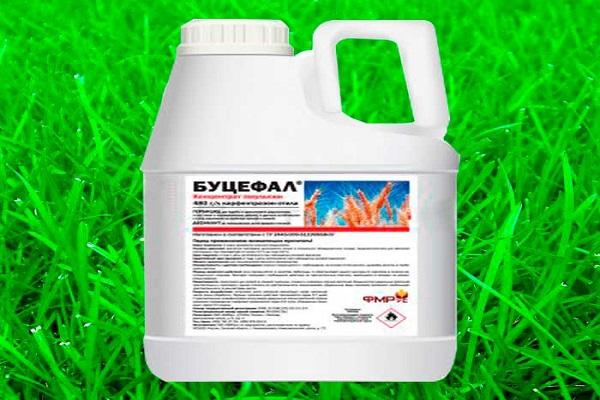
"Granstar Pro"
A highly effective one-component preparation for the removal of dicotyledonous weeds that have a detrimental effect on the growth of grain crops. The composition includes tribenuron-methyl (750 g / kg), which blocks protein synthesis and stops growth and provokes the death of the body.
To destroy weeds from the fields of winter and spring wheat, it is necessary to set the flow rate of the working fluid at 200-300 l / ha.
Carry out processing strictly in the tillering phase of the culture, in the early stages of the development of unnecessary plants.
"Starane Premium 330"
A herbicide that actively affects the vital activity of the field bindweed, as well as the tenacious bedstraw, even in the late phase of the growing season of grain crops. The drug consists of fluroxipir (333 g / l), which quickly penetrates into plant tissues and blocks all further vital processes, focusing on the formation of protein structures.
The consumption of the working solution is 200-300 l / ha; it is recommended to spray at the time of the end of booting.
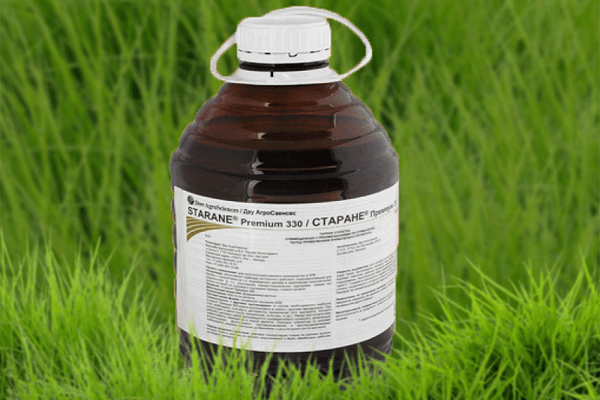
"Demeter"
The drug is widely used to eradicate annual weeds. In rare cases, it is used against perennials by root spraying. The composition is dominated by fluoroxypyr (350 g / l), which stimulates the growth of the root system and significantly accelerates the growth of cereals, while stopping the vital processes of many weeds.
The consumption rate of the product is 200-300 l / ha, the procedure is carried out in the growing season.
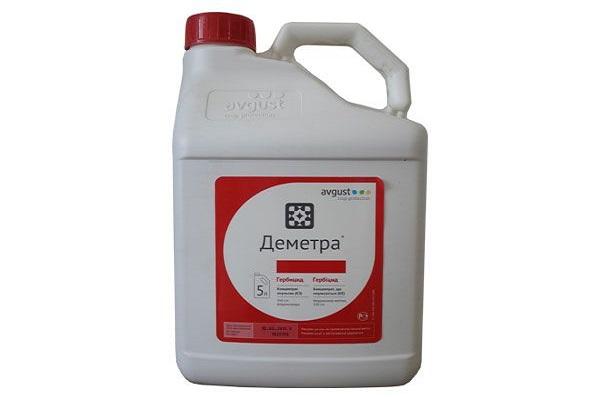
"Ferat"
Systemic herbicide for the control of perennial and annual weeds in cereals. The composition contains the substance tribenuron-methyl in the amount of 750 g / kg, which stops the process of combining amino acids, inhibits the growth and development of the weed, and provokes death.
For a good result, 200-300 l / ha is enough. Apply as soon as the cultivated plant begins to form a bush.
Which weed remedy to choose?
When choosing a weed killer, you need to take into account the variety of wheat, the amount of unnecessary vegetation and species diversity. Also familiarize yourself with the various brands of active ingredients and choose the most suitable drug, according to the instructions and reviews.

How to apply wheat herbicides
To be effective when using herbicides, follow the instructions from the manufacturer, the rules of use and the advice of professionals.
Important! Overdose is recommended to be avoided. Do not get hung up on the place of accumulation of weeds, it is better to carry out the treatment evenly.
Carry out the treatment at any stage of plant development, as indicated in the instructions for the preparation: after autumn harvesting, during planting, in summer during the growing season. It is forbidden to apply herbicide one and a half months before harvesting. Spray on a warm, windless day at a temperature not exceeding 25 degrees.
Treat large areas with a tractor or aircraft, while small areas can be conveniently irrigated with a garden sprayer.
